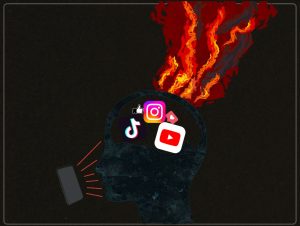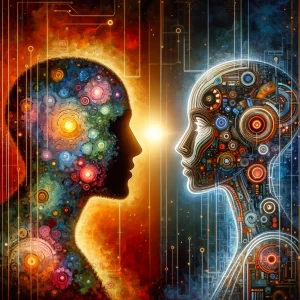Dian Liu & Xiaoyang Sun
In this article, we will reflect on how machine changes us, in a case study of reexamining BCI technology through McLuhan’s theoretical lens. In the following paragraphs, we will discuss:
- What is BCI?
- What is the application of BCI?
- Who is McLuhan and why is he important?
- From McLuhan’s perspective, how will BCI change human?
Pease follow our argument!
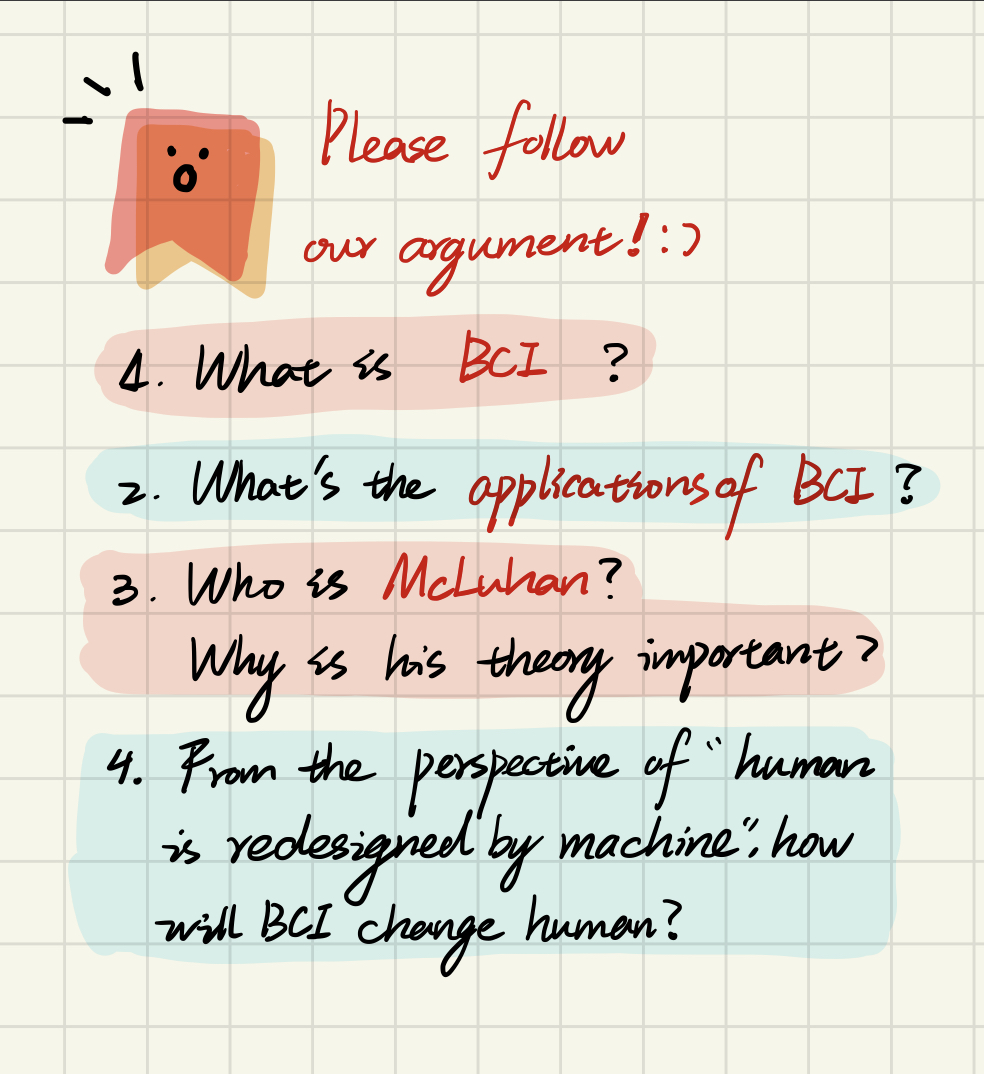
What is BCI?
Brain-computer interface (BCI) is a communication that does not depend on the normal output pathways consisting of peripheral nerves and muscles. It extracts the brain activity of its user and converts it into command signals, and has been applied ranging from medical treatment, robotics, and computers.
The basic working principle of BCI is to discriminate the intention of the action that triggers the change of EEG by classifying and recognizing the characteristic signals, which can, by certain means, be detected as changes in neuro-electrical activities indicating that an action is about to occur. Subsequently, it is programmed with a computer language to convert the human thinking activity into command signals to drive external devices, realizing the control of the human brain over the external environment without the direct participation of muscles and peripheral nerves.
What are the applications of BCI?
BCI is a very potential technology. For now, its prospect hasn’t been fully realized and is far from being widely commercialized and popularized. However, the popular press has made some predictions about its development and its impact on humans.
BCI is designed to replace or restore useful function to people disabled by neuromuscular disorders in the medical area. Through brain signals, BCI aims to realize the complex control of cursors, robotic arms, prostheses, wheelchairs, and other devices. The electronic spelling device (a kind of BCI) can bypass damaged motor neurons of paralyzed patients who cannot speak and write. Thus, BCI technology may allow disabled individuals to speak and/or use their limbs to communicate or operate assistive devices for walking and manipulating objects.
In addition, BCI technology is expected to improve brain-computer interaction. The mode of inputting codes to write complex programs will change. Code is the instruction that humans give to the computer, and writing the code can make the machine run according to our ideas. Through the interactive computer or electronic device of the brain-computer interface, we might directly understand our thoughts without going through complicated Programming languages to transform our ideas. Besides, BCI may largely reduce the procedures of seeking information on the internet, for it allows us to search accurate content without semantic descriptions.
Meanwhile, brain-computer interface technology is imagined to be applied to virtual reality. For example, Meanwhile, brain-computer interface technology is imagined to be applied to virtual reality. For example, it can complete dangerous experiments in the virtual world, conduct a bloodless war, train technologies that humans have not yet mastered, or complete high-risk outdoor sports. However, the views and predictions of BCI technology are largely Cartesian.
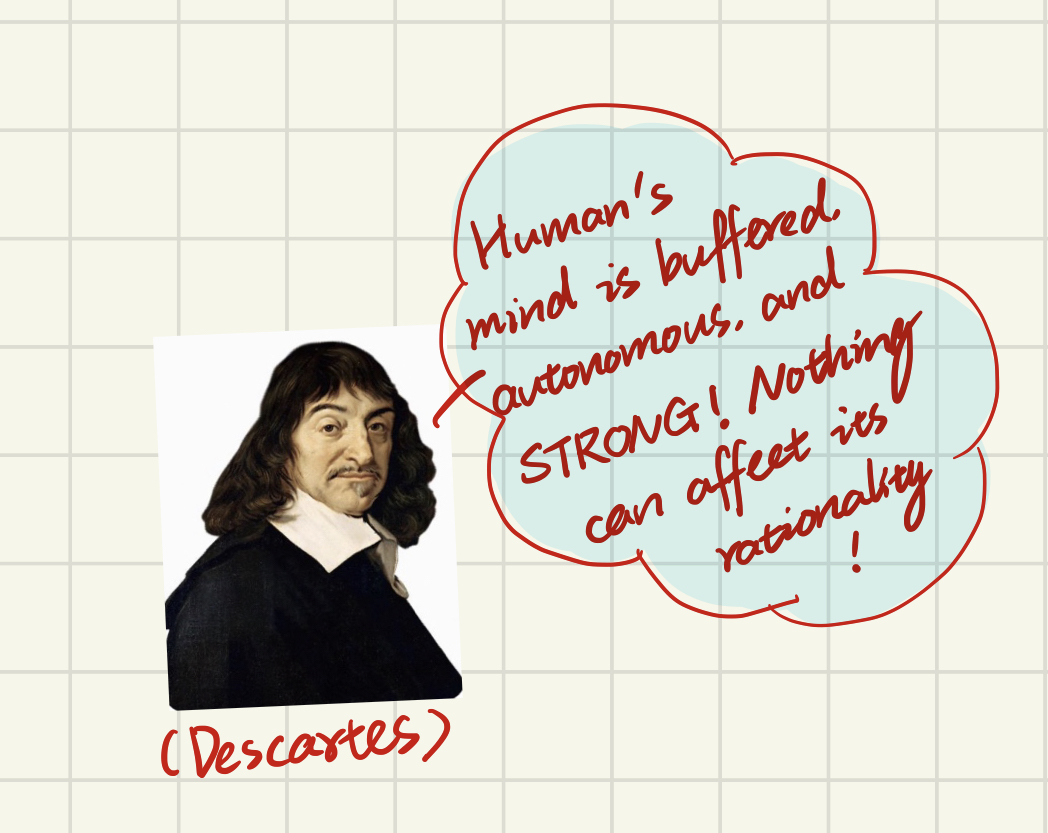
This means they view the human mind as the human essence, which is essentially autonomous. Human beings control and transform the environment through their own consciousness, extending their own will outward without being influenced by the external world and context.
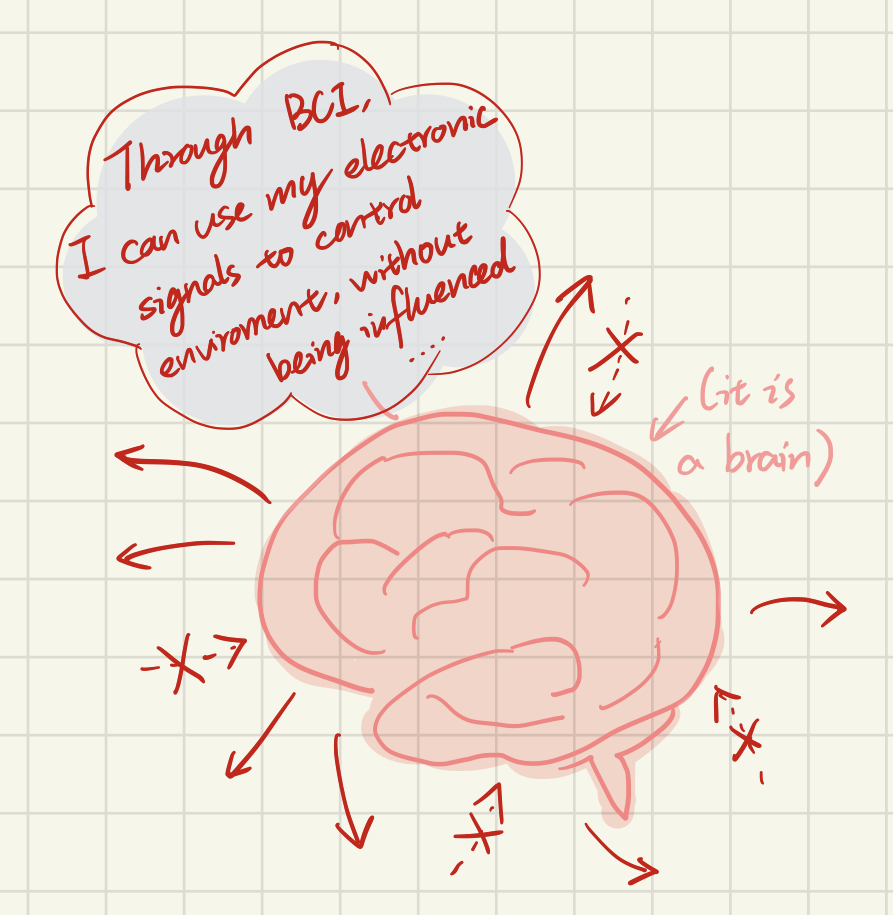
This intuition background of unthought affects people’s imagination of new technologies. Under the influence of Cartesian unthought, people are more likely to imagine what they can achieve by manipulating machinery – how they can further control their environment: for example, better medical care, use of virtual reality, and easier human-machine interaction.
Who is McLuhan and why is he important?
Rather than how to apply machinery as an unaffected rational subject, the Canadian philosopher McLuhan (1911-1980), who focused on the effects of technology on human perception and society, held the opposite view. He has a well-known saying: media and technologies are extensions of the human (McLuhan makes no distinction between technologies and tools and his use of media. Our tools, technologies, and means of communication are media in a sense they mediate our interactions with our environment, both natural and human). This saying has two layers: Humans use machines, machines change humans. Any extension from the machine, whether of skin, hand or foot, affects the human’s whole psychic and social complex. He believes that the impact of humans and technology is reciprocal. While focusing on how we use technology, it is also essential to focus on how technology has changed our minds, cognition, and society, i.e., how new technologies shape humans. In other words, Electronic systems and computers are not passive extensions of the nervous system and the brain: through electronics, the brain, and nervous system are being physically redesigned as machines. We are an extension of our technology, in the sense that tools extend the temporal, spatial, and limbic intensity of our existence. But BCI technology has something more unique: in the past, tools and artificial environments, in general, have indirectly facilitated the extension of the body, but with BCI, we are directly reconstructing the body as a machine to complement our basic biological processing patterns and create extended cognitive systems. Even its computational and problem-solving characteristics will be very different from those of a naked brain. The development of BCI technology will probably confirm McLuhan’s assertion that we wear our brains on the outside of our skulls and our nervous systems outside our skin.” We shape our tools, and then our tools shape us into post-humans.
I will use examples from the verbal, written, and mechanical age to make the above arguments better understood.
- The development of written culture created a solid psyche and the autonomous rational personality, which are unthinkable in a tribe with a poorly developed language.
- The advent of printing technology facilitated the standardization of language and the definition of homogeneous concepts. It even shaped nationalist emotions because it brought about a uniform, homogenous reading public, making collective feelings possible.
- Before the mechanical age, people were more concerned with the nature of things, the wholeness, and the holistic forces that could regulate the body or system. But the mechanical age drove the machine by breaking down the complex parts into pieces, which brought specialized operations, mechanical repetition, sequential operations, standardization, and rational causality, making people think that the whole is the sum of atomized parts and the parts are arranged linearly. As a result, the mechanical age has led to a more linear, fragmented, abstracted, and standardized perception, focusing more on decomposition and the individual than on the idea of the whole.
As you can see from the examples above, technologies are not neutral, passive objects that depend only on the way people use them; we do not only create a passive technological environment. Instead, technology also reshapes our concepts, metaphor, perception, the body, and society. Therefore, in addition to thinking about how BCI technologies will change our environment, it is also essential to think about how BCI technologies will reshape people’s perceptions, minds, and even social relationships. Namely, the significant question is: what is BCI doing to us?
From McLuhan’s perspective, how will BCI change human?
In this part, Warwick is well suited as an entry point to reexamine BCI with McLuhan’s theoretical perspective. It is because he does not only treat BCI technology as an extension of the brain and nervous system functions but also attempts to use BCI to redesign the brain and nervous system. He wants to change the physical perception of humans and thus the possible composition of society as a whole.
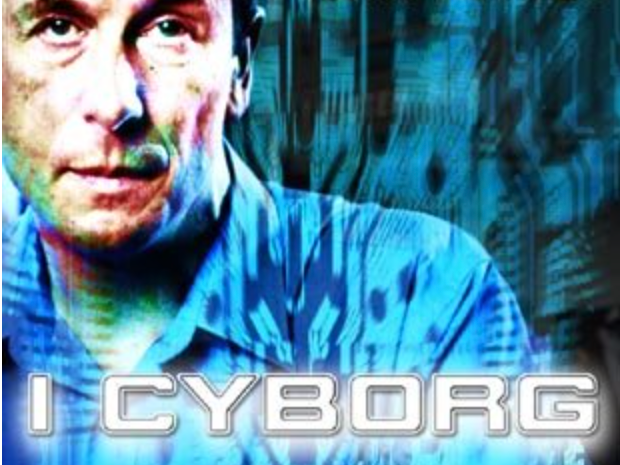
Professor Kevin Warwick in the University of Reading (his personal page),instead of looking at how BCI can change the environment, focused directly on how BCI will transform humans and took the first steps in individual experimentation with BCI technology. His project aims to transform humans into cyborgs. Warwick argues that humans only have a limited (even disconcertingly slow) way of perceiving and can only communicate inefficiently through language. He expects humans to use that technology to enhance themselves, including enabling additional sensory input and direct communication with thoughts.
Now let’s see what Warwick did to himself (Frankenstein’s experiments are always exciting)!
First, he implanted an RFID chip in his arm, through which he can manipulate doors, lights, heaters, and other computerized systems. He then implanted a miniature electrode array into the median nerve of his arm, through which he was able to control a motorized wheelchair and an intelligent artificial hand. He can feel the robot’s touch to some extent, and namely, the robot’s feedback sensory data is transmitted to his own nervous system so he can use the arm while blindfolded — as if he had a third arm.
The example of the robotic arm is an excellent example of the concept of redesigning the human body as a machine. As science and technology develop, BCIs will restore perception and senses to people with disabilities and enhance human physical abilities and cognitive abilities such as memory, computation, information processing, analysis of situations, and decision making. For example, a person may have enhanced body organs, working arms in addition to the human body, and become a cyborg so that the body-mechanical hybrid dominates biological perception. Or humans could have a cloud database of their own in their minds, revolutionizing the way knowledge and memory are acquired, allowing knowledge, information, emotions to be implanted directly in the brain in the form of electrical signals. McLuhan believes that electronic prosthetics have the potential to enhance the “body,” “own organs,” consciousness, and thought, thus changing the nature of human beings – the anime Ghost in the Shell is an excellent example of a cyborg worldview. But if we expand this ability further, we may need to redefine labor and work in an age of mind-controlled machinery. And, if everyone had enough knowledge and mechanical skills, we might no longer need a division of labor that would change the shape of the market and the state (Hopefully, neo-liberalism could end there!). Otherwise, with darker imagination, only the rich can transform themselves into a cyborg. Humans will not be divided only by economic elements but classified biologically.
Beyond the robotic arm attempt, Warwick also expects in the future to be able to establish a direct psychic connection between different nervous systems and overcome the limitations of language. To achieve these goals, albeit, he implanted a chip in both himself and his wife in a small step. Their nervous systems are connected through two chips and a computer. When his wife’s nervous system generates motor nerve signals, his own nervous system will be stimulated, and vice versa.
The results of this experiment, if extrapolated, would have a much more significant impact on humans and society than a robotic arm. Suppose we expand the precision and scope of Warwick’s experiments to extend our central nervous system itself on a global scale. In that case, time and space are eliminated, the mode of human communication and transmission of information is wholly changed. Humans may no longer need to resort to language – a compressed reality – to communicate with each other and can immediately participate in remote events and the lives and behavior of others. In the future age, when our central nervous system is technologically extended to involve us in the whole of humanity and to incorporate the whole of humankind in us, we necessarily participate, in-depth, in the consequences of our every action. In a more radical hypothesis, we could transfer our consciousness to one computer and download others’ consciousness, eventually eliminating human individuality and becoming homogeneous.

For example, if we can experience the feelings, perceptions, and thoughts of another human being in real-time, what is the difference between us and another human being? In such a circumstance, it’s like the end of anime EVA: everyone is dissolved in a conscious ocean and no more barrier between psyches left (I am sure neo-liberalism will end here :D).
Conclusion
Through the above analysis, we hope that people will realize the shaping role of machinery and technology on human beings through the above analysis. Moreover, we should recognize that this shaping is not inevitable. Because McLuhan’s theory is not deterministic — humans and society are not entirely determined by the development of technology, he is prompting us to think about how technology will change us and how we should cope with the psychic and social consequences of the following technology. Especially compared to other technology, BCI has such a potential to change what we are. Thus, it is necessary to creatively confront the transformative self and society brought about by BCI.
